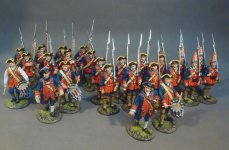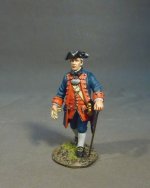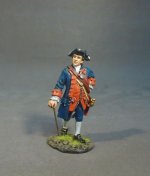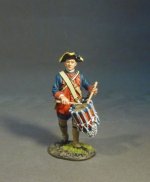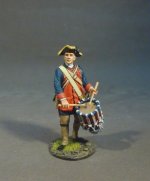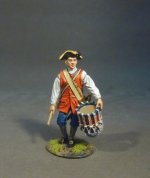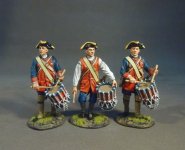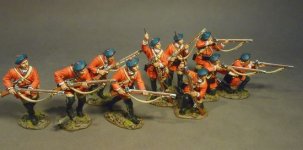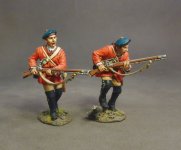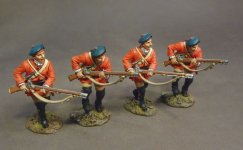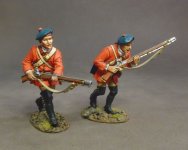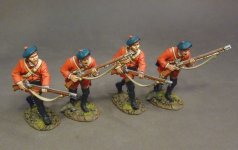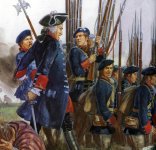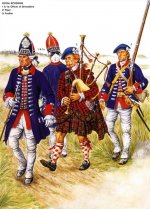THE EIGHTEENTH CENTURY
THE JACOBITE REBELLION
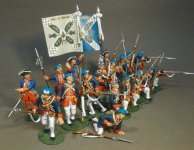
The Royal Ecossais was raised by John Drummond in 1744 and disbanded 1763.
Their organisation was to be based on that of the Irish regiments ,to be made up of 11 companies of fusiliers and 1 of grenadiers each of 50 men plus officers for a total of 660 effectives. The officers and men used to form the regiment came from several different sources, firstly from Scotsmen serving in the Irish regiments, Scottish exiles living in France together with recruits smuggled out of Scotland. With an effective of 500 men and officers assembled at St.Omer, with John Lord Drummond as lieutenant colonel, (as for all Royal Regiments, the King of France was always the colonel ) although Lord Drummond wrote on the 29th December 1744 that he was missing only 10 men to complete the regiment.
This regiment, as many other foreign regiments in tjhe French Army were not mercenaries as is often claimed, they were more often than not political or religious refugees who could not safely return to their homeland for fear of persecution.
The regiment had a strength of 350 men at the Battle of Culloden on the16th of April 1746 were they were in the second line and later they helped to cover the retreat of the Highlanders right wing, an attempt by Argyll Militia to interfere was pushed aside but in the skirmish the two battalions became separated and one , probably the 2nd battalion, was caught and surrounded by British Dragoons and forced to surrender in Inverness, the other one, together with their colours continued its retreat towards Ruthven Barracks and did not surrender until the 19th of April.
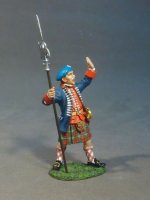
EEC-10
THE JACOBITE REBELLION 1745,
REGIMENT ROYAL ECOSSOIS,
SERGEANT,
(1 pc)
BIRCH BARK CANOES
Birch Bark Canoes were the main type and mode of transportation used by the Native American tribes who inhabited the Northeast woodlands, and eastern Canada. The design and style of the birch bark canoes were based on the natural resources that were available to the tribes, in this instance the people made use of the numerous birch trees found in the forests and woodlands of their tribal lands. The tribes built canoes made from the bark of the birch trees over a wooden frame. These canoes were broad enough to float in shallow streams, strong enough to shoot dangerous rapids, and light enough for one man to easily carry a canoe on his back.
The birch bark canoes were built in many different sizes. They could be used by a single person but were usually built for 4 - 6 people. Some of the war canoes could take up to 12 Native Indians
The Huron canoes measured about 21 feet long (7 metres) and 3 feet wide (1 metre) and could carry four or five men and about 200 pounds of cargo (91 kilograms). Their ability to travel long distances was seen as great assets by the French who quickly allied with the Huron to gain an advantage in the lucrative beaver fur trade
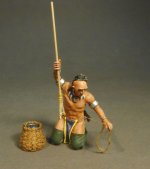
CAN-10
THE RAID ON ST. FRANCIS 1759,
WOODLAND INDIAN FISHING,
(2pcs)
Please note that CAN-10 is a set that can be used as an add-on to previous Canoe sets.
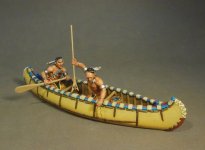
Lots more to follow........................................


